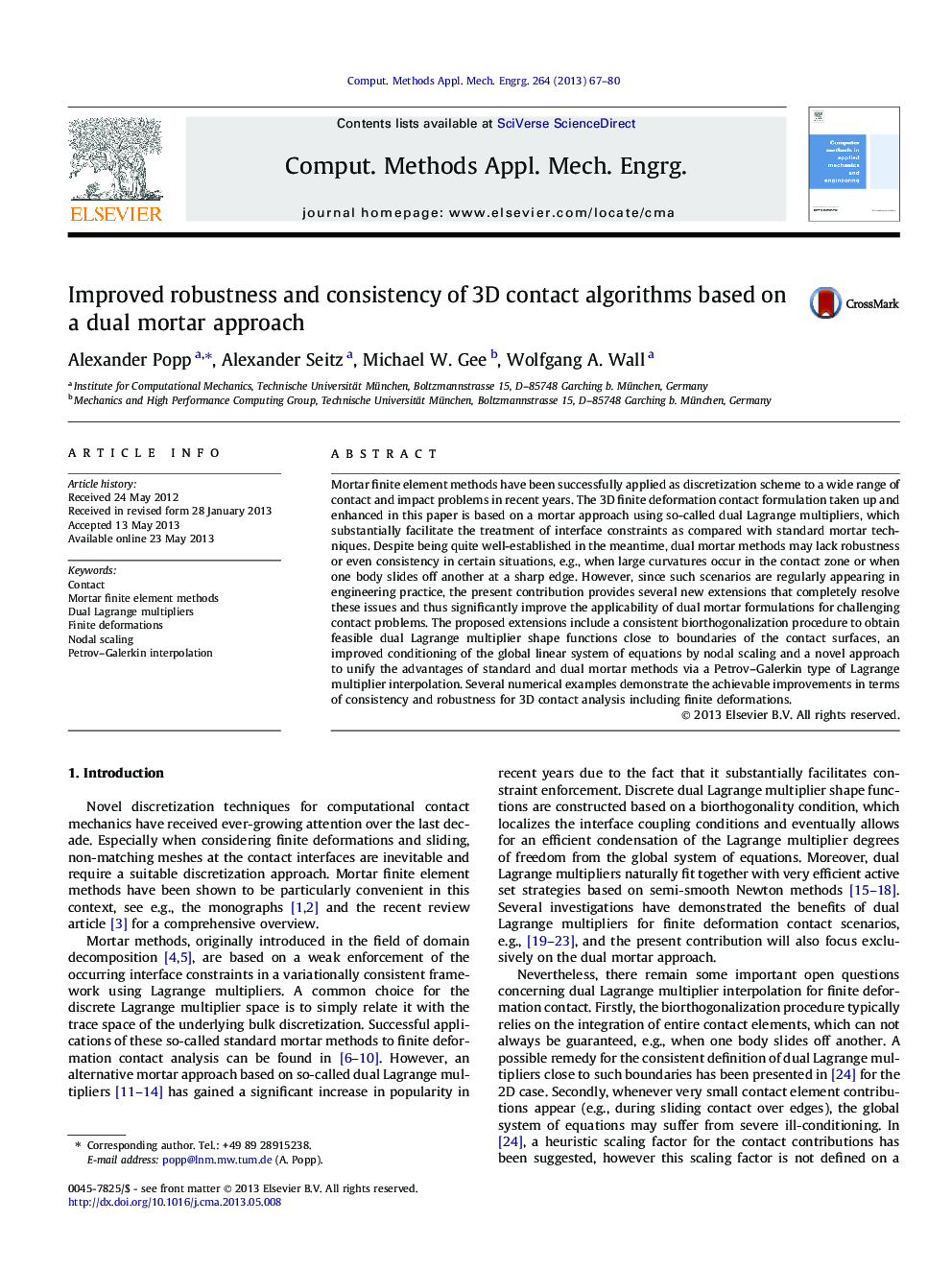| Article ID | Journal | Published Year | Pages | File Type |
|---|---|---|---|---|
| 6917825 | Computer Methods in Applied Mechanics and Engineering | 2013 | 14 Pages |
Abstract
Mortar finite element methods have been successfully applied as discretization scheme to a wide range of contact and impact problems in recent years. The 3D finite deformation contact formulation taken up and enhanced in this paper is based on a mortar approach using so-called dual Lagrange multipliers, which substantially facilitate the treatment of interface constraints as compared with standard mortar techniques. Despite being quite well-established in the meantime, dual mortar methods may lack robustness or even consistency in certain situations, e.g., when large curvatures occur in the contact zone or when one body slides off another at a sharp edge. However, since such scenarios are regularly appearing in engineering practice, the present contribution provides several new extensions that completely resolve these issues and thus significantly improve the applicability of dual mortar formulations for challenging contact problems. The proposed extensions include a consistent biorthogonalization procedure to obtain feasible dual Lagrange multiplier shape functions close to boundaries of the contact surfaces, an improved conditioning of the global linear system of equations by nodal scaling and a novel approach to unify the advantages of standard and dual mortar methods via a Petrov-Galerkin type of Lagrange multiplier interpolation. Several numerical examples demonstrate the achievable improvements in terms of consistency and robustness for 3D contact analysis including finite deformations.
Related Topics
Physical Sciences and Engineering
Computer Science
Computer Science Applications
Authors
Alexander Popp, Alexander Seitz, Michael W. Gee, Wolfgang A. Wall,
